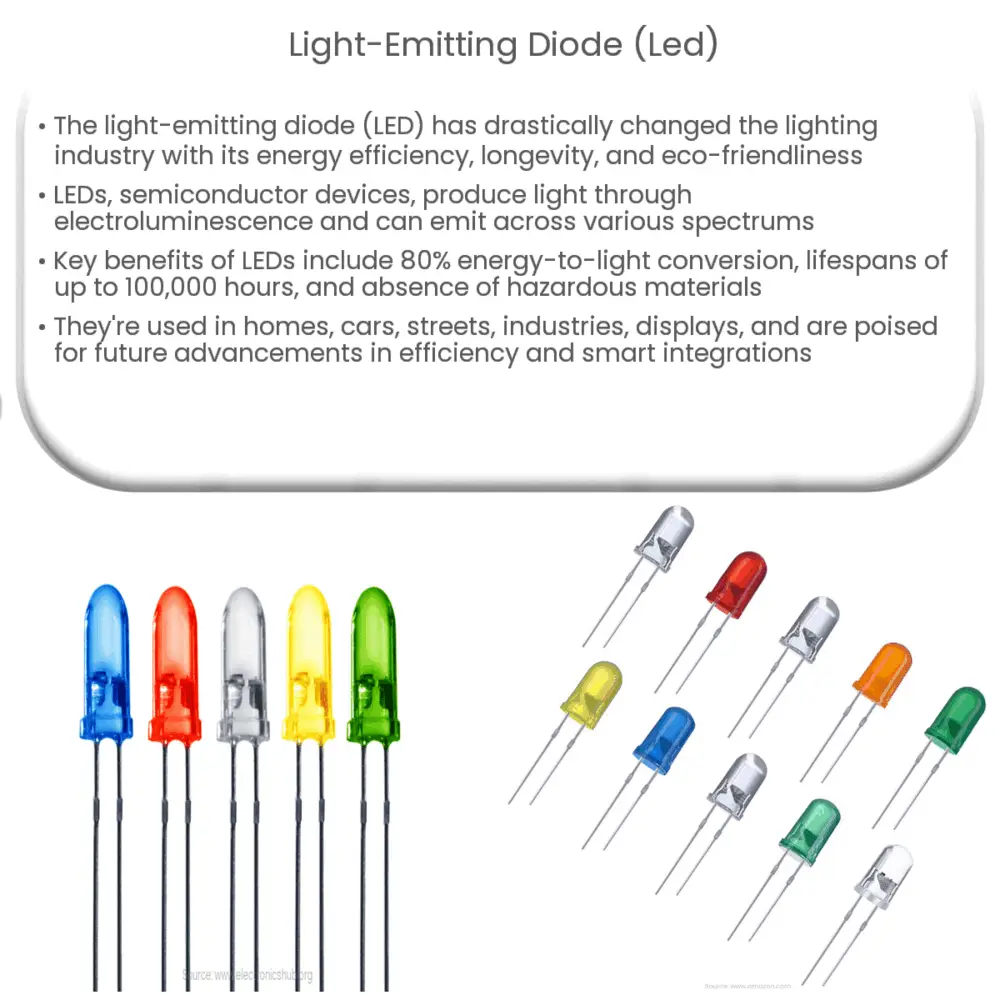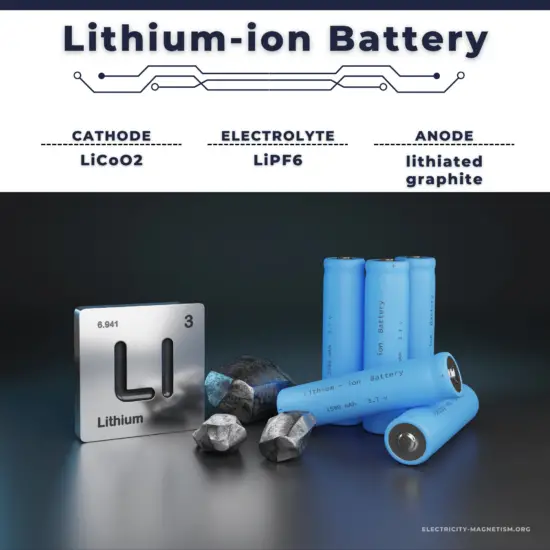Discover the science behind LEDs, their advantages over traditional lighting, versatile applications, and the bright future of LED technology.

Light-Emitting Diode (LED): A Bright Revolution in Lighting Technology
Introduction
The light-emitting diode, commonly known as LED, has transformed the lighting industry since its invention in the early 1960s. LEDs are small, solid-state devices that emit light when an electric current flows through them. They offer numerous advantages over traditional incandescent and compact fluorescent light bulbs, including energy efficiency, longevity, and environmental friendliness. In this article, we will explore the science behind LEDs, their various applications, and the future of this illuminating technology.
The Science Behind LEDs
LEDs are semiconductor devices that produce light through a process called electroluminescence. When a voltage is applied to the LED, electrons in the semiconductor material are excited and move from a lower energy level to a higher one. As these electrons return to their original energy level, they release energy in the form of photons, or light particles. The specific color of the emitted light depends on the energy gap between the two energy levels and the type of semiconductor material used.
LEDs are made of various materials, including gallium arsenide (GaAs), gallium phosphide (GaP), and gallium nitride (GaN). These materials, known as direct bandgap semiconductors, allow for the efficient conversion of electrical energy into light energy. By combining different materials, scientists can create LEDs that emit light across the visible, infrared, and ultraviolet spectrums.
Advantages of LED Lighting
LEDs offer numerous benefits over traditional lighting sources. Some of the key advantages include:
Energy Efficiency
LEDs are highly energy-efficient, converting approximately 80% of the electrical energy they consume into light. In comparison, incandescent bulbs convert only about 20% of the energy they use into light, with the rest being wasted as heat. This increased efficiency translates to significant energy savings and reduced greenhouse gas emissions.
Longevity
LEDs have an impressive lifespan, typically lasting between 25,000 and 100,000 hours. This is far longer than the lifespan of traditional incandescent bulbs, which average around 1,000 hours, and compact fluorescent bulbs, which last approximately 8,000 hours. As a result, LEDs require less frequent replacement, reducing maintenance costs and waste.
Environmental Friendliness
LEDs are an eco-friendly lighting option due to their low energy consumption and long lifespan. Additionally, they do not contain hazardous materials such as mercury, which is found in compact fluorescent bulbs. This makes LED disposal simpler and safer for the environment.
Versatility and Design Flexibility
LEDs are available in various shapes, sizes, and colors, providing unmatched design flexibility for both functional and decorative purposes. Their compact size and low heat emission enable them to be used in a wide range of applications, from large outdoor displays to intricate indoor lighting designs.
Dimmability and Instant-On Capability
LEDs can be easily dimmed, allowing users to adjust the brightness of the light according to their preferences and needs. Furthermore, LEDs do not require a warm-up period like traditional bulbs, providing instant illumination when turned on. This feature is particularly beneficial for security and emergency lighting applications.
Applications of LED Lighting
LED technology has found its way into various applications, including:
- Residential and Commercial Lighting: LEDs are commonly used in homes and businesses for general illumination, accent lighting, and task lighting, thanks to their energy efficiency and design flexibility.
- Automotive Lighting: LEDs are increasingly popular in automotive lighting due to their long lifespan, compact size, and resistance to vibration. They are used for headlights, tail lights, and interior lighting in vehicles.
- Street and Outdoor Lighting: LEDs are ideal for streetlights, traffic signals, and outdoor signage due to their energy efficiency, long lifespan, and durability in harsh weather conditions.
- Industrial and Horticultural Applications: LED lighting is used in warehouses, factories, and greenhouses for its energy-saving benefits and ability to provide specific light spectrums for plant growth.
- Displays and Screens: LEDs are utilized in televisions, computer monitors, and large outdoor displays for their vibrant colors, high resolution, and energy efficiency.
The Future of LED Technology
LED technology is continuously evolving, with researchers and manufacturers striving to improve its efficiency, color quality, and affordability. Future advancements in LED technology may include:
- Increased Energy Efficiency: Ongoing research aims to develop LEDs with even higher energy efficiency, which will further reduce energy consumption and associated greenhouse gas emissions.
- Improved Color Quality: Researchers are working on enhancing the color rendering index (CRI) of LEDs, which will improve the quality of light and provide more accurate color representation.
- Smart Lighting Solutions: The integration of LED lighting with smart home and building automation systems will enable advanced control, monitoring, and energy management capabilities.
- Flexible and Stretchable LEDs: The development of flexible and stretchable LED materials will enable new applications in wearables, medical devices, and other innovative areas.
In conclusion, the light-emitting diode (LED) has revolutionized the lighting industry with its energy efficiency, long lifespan, and versatility. As research and development continue, we can expect to see even more innovative and sustainable applications of this remarkable technology.



